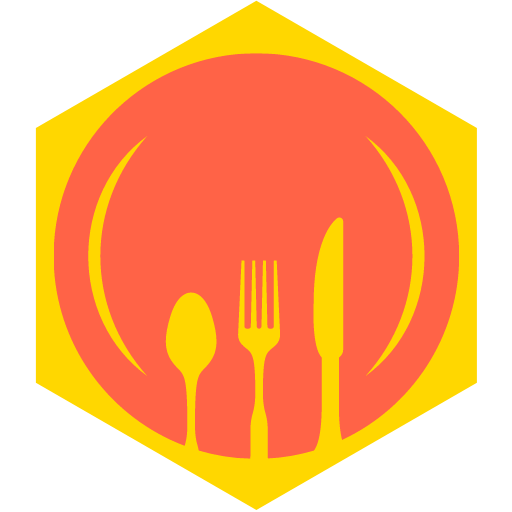In today’s fast-paced world, businesses in Singapore are turning to digital menu boards to capture customer attention and boost sales. These dynamic displays offer a modern way to showcase menus with vibrant visuals and real-time updates. They help restaurants and cafes stand out in a competitive market by making ordering easier and more engaging.
We’ve seen how digital menu boards transform traditional menus into interactive experiences that attract more customers. Whether it’s promoting daily specials or adjusting prices on the fly, these boards provide flexibility that paper menus simply can’t match. Let’s explore why digital menu boards are becoming a must-have for food businesses across Singapore.
Overview of Digital Menu Boards in Singapore
Digital menu boards in Singapore revolutionize the way food businesses showcase offerings. Their adoption grows rapidly, driven by the need for engaging visual communication and operational flexibility in a competitive market.
What Is a Digital Menu Board?
A digital menu board displays food and beverage options using high-resolution screens instead of static printed menus. It blends several elements:
- Dynamic Content: Images, videos, animations, and text update instantly.
- Real-time Updates: Menus change for promotions, new items, and stock availability.
- Interactive Features: Touchscreens enable customers to browse or customize orders.
- Remote Management: Centralized control systems allow changes across multiple locations.
“Digital menu boards shorten decision-making times by 30%, boosting sales and improving customer satisfaction.” — Digital Signage Today
Key components comparison:
| Feature | Traditional Menu | Digital Menu Board |
|---|---|---|
| Update Frequency | Monthly or less | Instantly |
| Visual Appeal | Limited, static | High-definition, dynamic |
| Cost Over Time | Lower upfront | Higher upfront, lower ongoing |
| Customization | None | Personalized content |
| Customer Engagement | Passive | Interactive |
Why Are They Popular in Singapore?
Singapore’s fast-paced food scene demands agility and innovation that digital menu boards provide. Key reasons include:
- High Foot Traffic: Locations like hawker centers, malls, and cafes benefit from eye-catching displays to attract diverse customers.
- Multilingual Support: Boards easily switch languages, catering to Singapore’s multicultural population.
- Promoting Daily Specials: Quick updates promote limited-time offers and festive menus efficiently.
- Reducing Printing Costs: Digital screens eliminate reprinting every menu change, saving resources.
- Enhanced Branding: Vibrant visuals strengthen brand identity, essential in a crowded marketplace.
“Singapore’s operators appreciate how digital menu boards adapt to market trends instantly, ensuring relevancy.” — Food Tech Asia Report 2023
Adoption by sector:
| Sector | Usage Percentage (%) | Features Leveraged |
|---|---|---|
| Quick Service | 75 | Real-time menu updates, promotions |
| Fine Dining | 40 | Interactive customization |
| Cafés & Bakeries | 60 | Visual branding and specials |
| Food Courts & Hawker Centers | 50 | Multilingual displays, high visibility |
Embracing digital menu boards helps Singapore food businesses meet evolving customer expectations with visual appeal and operational efficiency.
Key Features of Digital Menu Boards in Singapore
Digital menu boards in Singapore combine advanced technology with user-centric design, delivering adaptable solutions that boost customer interaction and streamline restaurant operations. These features address the unique demands of Singapore’s diverse and dynamic food industry.
Customization and Design Options
Customization stands out as a vital feature. Digital boards offer:
- Multiple Layouts including grid, list, and carousel formats
- Branded Themes that reflect the restaurant’s identity
- Multilingual Support catering to English, Mandarin, Malay, and Tamil speakers
- Dynamic Visuals such as HD images, animations, and video loops to engage customers
These designs deliver immersive experiences that adapt to different cuisines and customer preferences. For example, a hawker center might use bright, bold colors, while a fine dining restaurant opts for minimalist, elegant themes.
“Customization in digital menu boards lets brands create unique storytelling experiences while maintaining consistent brand messaging.” — Digital Signage Today
| Feature | Description | Benefits |
|---|---|---|
| Layout Variety | Grid, list, carousel display options | Enhances readability and style |
| Branded Themes | Tailored color schemes and fonts | Strengthens brand identity |
| Multilingual Support | Language options for diverse Singaporeans | Improves customer accessibility |
| Dynamic Visuals | HD video, animations, interactive elements | Captures attention effectively |
Integration with POS Systems
Seamless integration with Point of Sale (POS) systems enhances operational efficiency. Key integration capabilities include:
- Automatic Price Updates that reflect promotions or menu changes instantly
- Order Status Display to inform customers of preparation progress
- Inventory Synchronization to avoid showcasing unavailable items
- Sales Analytics Access to adjust menu strategies based on performance data
This integration reduces manual errors and speeds up service, critical in fast-paced environments like food courts or quick service restaurants in Singapore.
| Integration Capability | Functional Outcome |
|---|---|
| Automatic Price Updates | Real-time pricing accuracy |
| Order Status Display | Enhances customer communication |
| Inventory Sync | Prevents orders of out-of-stock items |
| Sales Analytics | Data-driven menu optimization |
Real-Time Updates and Content Management
Real-time updates allow businesses to respond instantly to market demands and operational changes. Main functionalities include:
- Remote Content Management enabling centralized control across multiple locations
- Scheduled Content Playback for timed promotions or happy hour specials
- Instant Menu Adjustments reflecting supply fluctuations or trending items
- User-Friendly Dashboards accessible via desktop or mobile apps for easy edits
These capabilities ensure the menu remains relevant and attracts traffic during key business hours while reducing print-related delays and costs.
| Real-Time Feature | Purpose | Impact |
|---|---|---|
| Remote Management | Control multiple screens from one platform | Saves time and ensures consistency |
| Scheduled Playback | Automates timed promotions | Increases targeted marketing effectiveness |
| Instant Adjustments | Updates menu based on stock or trends | Reduces waste and maximizes sales |
| User-Friendly Interface | Simplifies content editing | Encourages frequent updates and freshness |
Benefits of Using Digital Menu Boards for Singapore Businesses
Digital menu boards elevate customer experiences and boost operational efficiency for Singapore businesses in food and beverage sectors. Their dynamic nature offers tangible advantages that traditional menus cannot match.
Enhanced Customer Engagement
Digital menu boards capture attention with vibrant visuals and multimedia content, creating an interactive atmosphere. They support multilingual displays—essential for Singapore’s diverse population—allowing us to present menu information in English, Mandarin, Malay, and Tamil. This inclusivity enhances customer satisfaction and broadens market reach.
Real-time updates let us showcase daily specials, limited-time offers, and promotional content, creating a sense of urgency. Interactive features, such as touchscreens or QR codes, enable customers to explore allergens, nutritional facts, and customize orders seamlessly. This transparency builds trust and fosters loyalty.
Quotes from industry leaders emphasize this point:
“Digital menu boards transform static menus into engaging experiences, driving deeper connections with customers.” – Singapore Food & Beverage Tech Report
| Feature | Benefit | Example |
|---|---|---|
| Multilingual Support | Appeals to diverse audiences | Menu in English and Mandarin |
| Real-Time Updates | Promotes timely offers | Flash sales on weekend items |
| Interactive Elements | Enables customization | Allergy info on demand |
Increased Sales and Upselling Opportunities
Employing digital menu boards significantly lifts sales by highlighting high-margin items and suggestive selling. Animated visuals and bright colors draw eyes to featured dishes or combo meals, increasing average order value.
Data from Singaporean quick-service restaurants indicates a 15-25% increase in upsell conversions after adopting digital displays. Dynamic pricing and limited-time promotions shown on screens encourage impulse buying, maximizing revenue during peak hours.
Using analytics from integrated Point of Sale (POS) systems helps us tailor content strategy based on customer preferences and sales performance in real time, further improving profitability.
| Sales Metric | Before Digital Menu Boards | After Digital Menu Boards | Percentage Increase |
|---|---|---|---|
| Average Order Value | SGD 8 | SGD 10 | 25% |
| Upsell Conversion Rate | 12% | 17% | 42% |
| Promotional Item Sales | 500 units/month | 625 units/month | 25% |
Cost-Effectiveness Compared to Traditional Menus
Digital menu boards reduce printing and labor expenses by eliminating frequent manual updates and menus reprints. Restaurants save thousands of Singapore dollars annually by updating menus electronically rather than ordering new printed materials.
Energy-efficient LED screens consume less power, offering long-term savings compared to conventional lighting. Centralized content management allows multiple outlets to update menus simultaneously, streamlining operations for chain restaurants and franchises.
Research shows that businesses recoup initial investments in digital menu boards within 12 to 18 months through reduced operational costs and increased revenue.
| Cost Aspect | Traditional Menus | Digital Menu Boards |
|---|---|---|
| Printing & Design Costs | SGD 2,000/year | SGD 0 (digital updates) |
| Staff Time for Updates | 10 hours/month | 1 hour/month (remote updates) |
| Energy Usage | Low (lighting only) | Moderate (LED screens with energy-efficient technology) |
| Return on Investment | N/A | 12–18 months |
Harnessing digital menu boards empowers Singapore businesses to stay agile, reduce expenses, and engage customers effectively in a fast-paced market.
Top Providers of Digital Menu Boards in Singapore
Digital menu boards are essential tools in Singapore’s dynamic food industry. Selecting the right provider impacts design quality, technology integration, pricing, and after-sales service. Let’s explore the top companies delivering comprehensive digital menu board solutions.
Leading Companies and Solutions
We identified key players offering state-of-the-art digital menu board systems tailored for Singapore’s diverse food establishments. These providers excel in innovation, customization, and seamless POS integration.
| Provider | Specialization | Key Features | Notable Clients |
|---|---|---|---|
| Signbox Pte Ltd | Customizable digital signage | Real-time updates, multilingual support | Food courts, cafes, franchise chains |
| Omnivex Singapore | Cloud-based content management | Remote management, interactive touchscreen | Quick service restaurants, malls |
| iClick Interactive Asia | Multimedia digital advertising | Dynamic promotions, analytics integration | Fine dining, hawker centers |
| Spire Digital | End-to-end digital menu design | POS integration, energy-efficient display panels | Food courts, cafes, fast food outlets |
“Choosing a provider that offers robust content management and POS integration is vital for maintaining agility in menu updates,” explains a digital signage expert at Signbox Pte Ltd.
All these companies deliver scalable solutions suitable for small cafés to large food courts and are adept at handling multilingual content necessary for Singapore’s multicultural market.
Pricing and Service Packages
Understanding pricing structures helps businesses plan investments effectively while maximizing ROI. Providers offer modular packages based on screen quantity, software capabilities, and support levels.
| Package Type | Features Included | Price Range (SGD) | Ideal For |
|---|---|---|---|
| Basic | Single screen templates, standard updates | $1,000 – $2,500 per screen | Small cafés, startups |
| Standard | Multi-screen management, basic POS integration | $2,500 – $5,000 per screen | Medium restaurants, quick service |
| Premium | Full POS sync, remote management, analytics | $5,000 – $8,000+ per screen | Large chains, food courts |
All packages commonly include installation, training, and technical support during business hours, with optional 24/7 support for premium clients.
Customization add-ons, such as multilingual interface adaptation and interactive touchscreens, incur additional costs yet greatly enhance customer engagement.
“Investment recoups typically occur within 12-18 months thanks to printing cost savings and increased customer spend,” notes a consultant from Omnivex Singapore.
We encourage reviewing service level agreements carefully to verify software updates, hardware warranties, and emergency support response times.
This detailed look at top digital menu board providers in Singapore equips food businesses with the knowledge to select providers that align with their operational scale and digital transformation goals.
Implementation Tips for Digital Menu Boards in Singapore
Effective implementation of digital menu boards drives engagement and streamlines operations in Singapore’s fast-paced food scene. We focus on hardware selection and content strategy to maximize impact and ROI.
Choosing the Right Hardware and Software
Selecting suitable hardware and software forms the foundation of a successful digital menu board deployment. We prioritize reliability, scalability, and user-friendliness to ensure seamless operation.
| Component | Recommendation | Rationale |
|---|---|---|
| Display Screen | Commercial-grade LED or LCD screens (43”-75”) | Delivers high-resolution visuals with durability in humid climates. |
| Media Player | Embedded or external players supporting 4K video | Enables smooth playback and supports various media formats. |
| Software | Cloud-based Content Management Systems (CMS) | Offers real-time updates, remote access, and multi-screen synchronization. |
| Networking | Stable wired or reliable Wi-Fi connectivity | Ensures quick and secure content uploads and management. |
| Mounting Hardware | Adjustable wall mounts or kiosks | Provides flexibility in placement for visibility and accessibility. |
We consult industry standards like the InfoComm International guidelines and Singapore’s NEA requirements for electronic displays. Prioritizing energy-efficient equipment reduces operational costs and complies with local regulations.
“The right blend of hardware and software ensures a dynamic digital menu board experience that draws customers and simplifies menu management.” – Digital Signage Experts, Spire Digital
Content Strategy for Maximum Impact
Crafting compelling content optimizes customer engagement and sales conversion. We focus on clarity, localization, and dynamic elements tailored to Singapore’s diverse clientele.
Core content principles:
- Prioritize readability: Use large, legible fonts (>30 pt) and high-contrast colors to enhance visibility from different distances.
- Incorporate multilingual support: Present menus in English, Mandarin, Malay, and Tamil to cater to Singapore’s multilingual population.
- Highlight promotions dynamically: Feature time-sensitive deals during peak hours to create urgency and increase average order value.
- Use high-quality visuals: Include vivid images and short videos of popular dishes to stimulate appetite and aid decision-making.
- Leverage real-time updates: Adjust menus instantly for stock availability, pricing changes, or special events using CMS.
| Content Element | Implementation Tip | Impact |
|---|---|---|
| Menu Layout | Group items by category with clear headings | Simplifies navigation and reduces customer decision time |
| Visual Media | Use 1920×1080 px images and 10-15 second loops | Enhances display appeal while maintaining viewer interest |
| Call-to-Action | Display “Order Now” and “Limited Time Offer” prompts | Encourages quicker purchase decisions |
| Social Proof | Showcase customer ratings or featured reviews | Builds trust and reinforces brand credibility |
| Analytics Integration | Monitor dwell time and interaction rates | Guides content optimization and menu adjustments |
We implement A/B testing for different layouts and offers to identify the most effective combination. Updating content frequently maintains customer interest and reflects Singapore’s ever-changing food trends.
“Digital menu boards succeed when they adapt messages quickly and speak directly to the target audience’s language and preferences.” – Marketing Insights, Omnivex Singapore
By combining robust hardware choices with a strategic and localized content approach, digital menu boards in Singapore become powerful tools that elevate customer experience and operational agility.
Conclusion
Embracing digital menu boards opens up new possibilities for food businesses in Singapore to stay competitive and connect with customers more effectively. Their ability to deliver vibrant, real-time content and seamless updates means we can adapt quickly to market trends and customer preferences.
By choosing the right technology and crafting engaging content, we ensure our menus not only inform but also inspire and drive sales. Digital menu boards are more than just screens—they’re strategic tools that elevate both customer experience and operational efficiency in Singapore’s dynamic food industry.
Frequently Asked Questions
What are digital menu boards?
Digital menu boards are high-resolution screens that display food and beverage options with dynamic content, real-time updates, and interactive features to enhance customer engagement and operational efficiency.
How do digital menu boards benefit food businesses in Singapore?
They attract customer attention, allow easy updates for promotions and prices, reduce printing costs, support multiple languages, and improve brand visibility, helping businesses increase sales and efficiency.
How do digital menu boards compare with traditional menus?
Digital boards offer dynamic updates, vibrant visuals, customization, and remote management, unlike static traditional menus which require reprinting and lack interactivity.
Which types of food establishments in Singapore use digital menu boards?
Quick service restaurants, fine dining, cafés, food courts, and hawker centers all use digital menu boards to meet diverse customer needs and stay competitive.
What features should I look for in a digital menu board?
Key features include high-resolution screens, multilingual support, POS integration, real-time updates, customizable layouts, branded themes, and cloud-based content management.
How do digital menu boards integrate with POS systems?
They synchronize prices, update orders in real-time, manage inventory, and provide analytics to optimize menu content and improve sales strategies.
Are digital menu boards cost-effective?
Yes, they reduce printing and labor expenses and energy-efficient models offer long-term savings. Businesses typically recoup their investment within 12 to 18 months.
Who are the top digital menu board providers in Singapore?
Leading providers include Signbox Pte Ltd, Omnivex Singapore, iClick Interactive Asia, and Spire Digital, each offering tailored solutions for various food business needs.
What are best practices for implementing digital menu boards?
Choose commercial-grade screens, use cloud-based CMS, ensure stable networking, prioritize energy-efficient hardware, and develop a strategic content plan with high-quality visuals and multilingual support.
How can content strategy improve digital menu board effectiveness?
By using readable fonts, dynamic promotions, multilingual content, and A/B testing to optimize display, businesses can maintain customer interest and boost sales.


